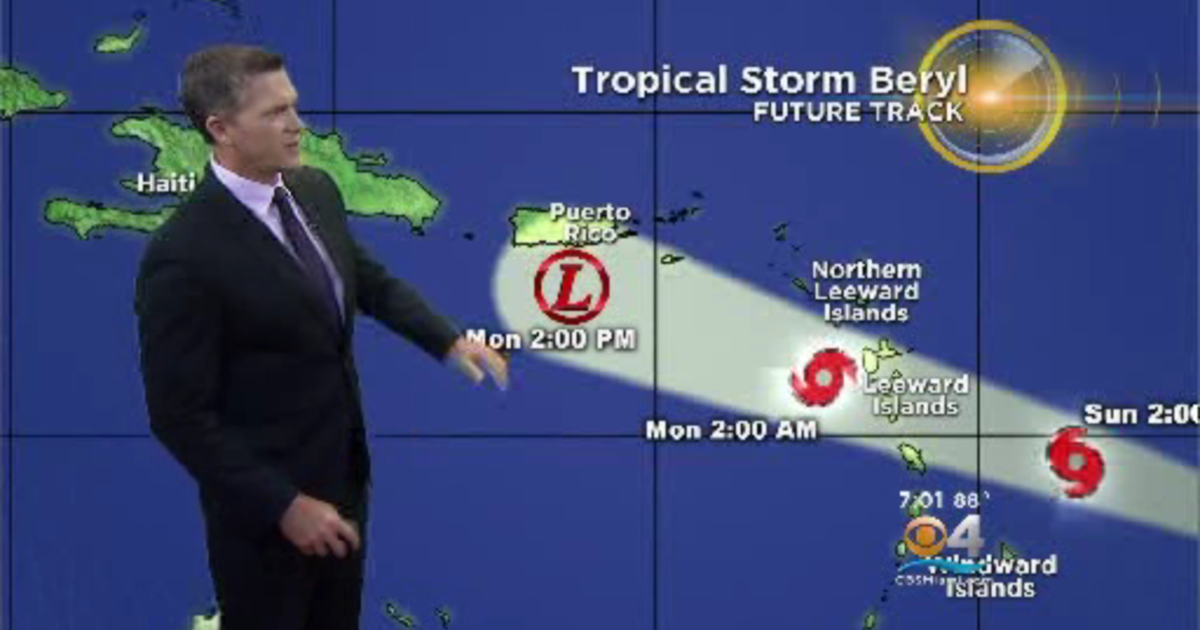Hurricane Beryl’s Impact on Jamaica: Hurricane Beryl Jamaica

Hurricane Beryl, a Category 1 hurricane, made landfall in Jamaica on July 12, 2018. The storm brought heavy rainfall, strong winds, and flooding to the island.
The storm’s path took it across the southern coast of Jamaica, from Portland Parish in the east to Westmoreland Parish in the west. The strongest winds were reported in Portland Parish, where gusts reached 120 miles per hour. The storm surge caused flooding along the coast, damaging homes and businesses.
The heavy rainfall caused flooding in many parts of the island, including the capital city of Kingston. The flooding damaged roads and bridges, and made it difficult for people to get around. The storm also caused power outages and water shortages.
Timeline of Key Events
* July 10, 2018: Hurricane Beryl forms in the Atlantic Ocean.
* July 12, 2018: Hurricane Beryl makes landfall in Jamaica as a Category 1 hurricane.
* July 13, 2018: The storm moves across Jamaica, causing heavy rainfall, strong winds, and flooding.
* July 14, 2018: Hurricane Beryl weakens to a tropical storm as it moves away from Jamaica.
Jamaica’s Response to Hurricane Beryl
:quality(70)/d1hfln2sfez66z.cloudfront.net/11-12-2019/t_423d5e2948964ee2aff5c801c5f08a9b_name_CB725C2ADED4425FB11D26B8BA968321_1.jpg)
Hurricane beryl jamaica – In the face of Hurricane Beryl’s wrath, Jamaica swiftly mobilized its emergency response mechanisms to mitigate the impact and safeguard its citizens. Immediate actions were taken to evacuate vulnerable communities, secure infrastructure, and provide essential aid to those affected.
Immediate Response Efforts
- Mandatory evacuations were ordered for low-lying coastal areas, with shelters established in safer zones to accommodate displaced residents.
- Critical infrastructure, including power lines, water systems, and communication networks, were reinforced and monitored to minimize disruptions.
- Emergency supplies, such as food, water, and medical kits, were distributed to affected communities through government agencies and non-profit organizations.
- Law enforcement and disaster management teams were deployed to maintain order, assist with evacuations, and coordinate relief efforts.
Long-Term Recovery and Rebuilding
Beyond the immediate response, Jamaica embarked on a comprehensive recovery and rebuilding plan to address the long-term consequences of Hurricane Beryl.
- Damaged homes and infrastructure were repaired or reconstructed, with a focus on resilience and sustainability.
- Economic recovery programs were implemented to support affected businesses and stimulate job creation.
- Community outreach initiatives were launched to provide psychological support and promote mental well-being among those impacted.
- Environmental restoration efforts were undertaken to protect ecosystems and mitigate future disaster risks.
Effectiveness and Areas for Improvement
Jamaica’s response to Hurricane Beryl demonstrated the country’s commitment to disaster preparedness and resilience. However, areas for improvement were identified to enhance future disaster management:
- Early warning systems can be further strengthened to provide more accurate and timely forecasts.
- Community engagement and education programs can be expanded to promote disaster awareness and preparedness among citizens.
- Collaboration between government agencies, non-profit organizations, and international partners can be enhanced to streamline response efforts.
- Investment in disaster-resilient infrastructure can be prioritized to minimize the impact of future storms.
By addressing these areas, Jamaica can further enhance its disaster preparedness and response capabilities, ensuring a more resilient and disaster-ready nation.
Lessons Learned from Hurricane Beryl

Hurricane Beryl, which made landfall in Jamaica in 2018, provided valuable lessons for enhancing disaster preparedness and resilience in the country and other vulnerable regions.
One key lesson was the importance of early warning systems and timely evacuation. The timely issuance of warnings and the efficient evacuation of residents from vulnerable areas helped to minimize casualties and damage.
Improved Infrastructure
Another lesson learned was the need for improved infrastructure, particularly in coastal areas. The storm surge and flooding caused significant damage to buildings, roads, and bridges, highlighting the importance of investing in resilient infrastructure that can withstand extreme weather events.
Strengthening Community Resilience
Hurricane Beryl also underscored the importance of strengthening community resilience. Community-based organizations and local leaders played a crucial role in providing support and assistance to affected communities, demonstrating the value of community engagement and preparedness.
Enhanced Disaster Management Strategies, Hurricane beryl jamaica
Based on the lessons learned from Hurricane Beryl, several recommendations can be made to improve disaster management strategies:
- Invest in early warning systems and disaster preparedness education to enhance community awareness and response.
- Strengthen infrastructure in coastal areas to withstand storm surges and flooding, including the construction of seawalls, levees, and flood-resistant buildings.
- Promote community resilience by empowering local organizations and leaders to play a key role in disaster preparedness and response.
- Develop comprehensive disaster management plans that incorporate lessons learned from past events and best practices from other regions.
- Establish a dedicated fund for disaster preparedness and response to ensure adequate resources are available when needed.
Hurricane Beryl battered Jamaica with torrential rains and howling winds, leaving a trail of devastation in its wake. Amidst the chaos, Tim Scott , a renowned humanitarian, arrived on the island to lend a helping hand. Scott’s compassion and unwavering dedication inspired hope in the storm-ravaged communities, as he worked tirelessly alongside local volunteers to provide aid and comfort to those affected by Hurricane Beryl’s wrath.
The catastrophic impact of Hurricane Beryl on Jamaica left an indelible mark, its destructive force testing the resilience of the island nation. Amidst the devastation, a beacon of hope emerged in the form of Tim Scott , a renowned advocate for disaster relief.
His unwavering support and tireless efforts to mobilize resources brought solace and rebuilding to the storm-ravaged communities, restoring a glimmer of hope amidst the wreckage left by Hurricane Beryl’s wrath.